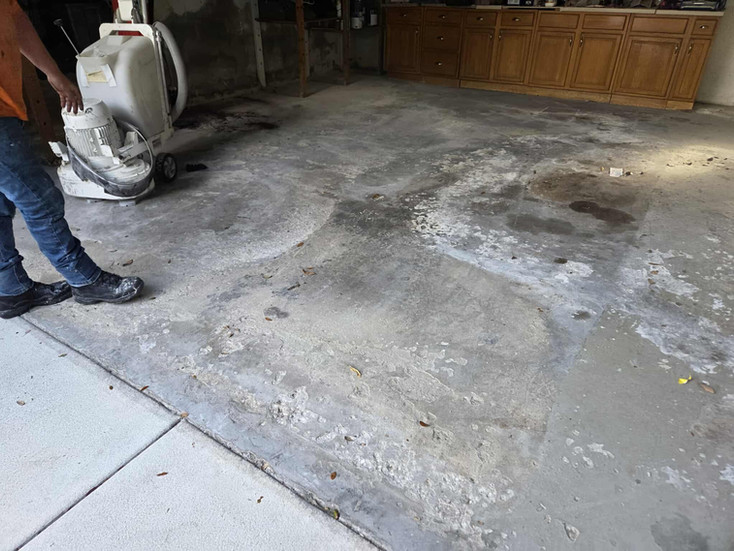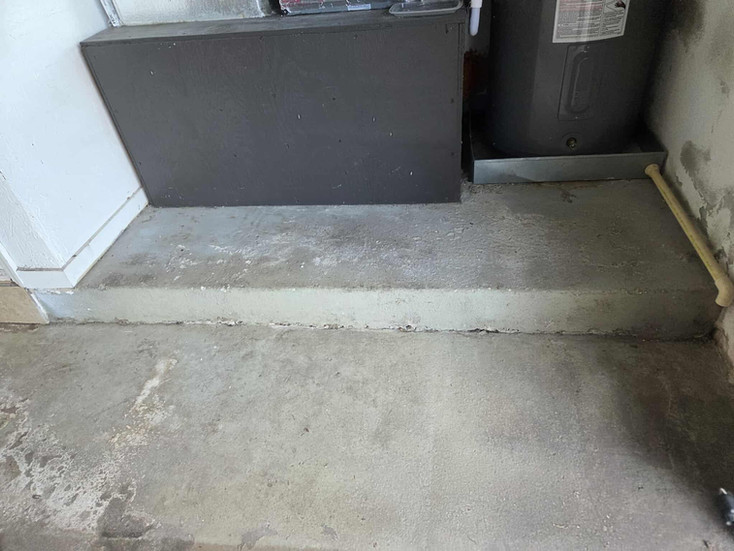
Peavy Project
Outback Polyaspartic Garage Floor Project Case Study
Project Information
Case Study: Restoring a 20+ Year-Old Latent Concrete Slab for Jody Peavy
This case study highlights how proper diagnosis and the right epoxy system can completely rejuvenate a concrete slab with long-term moisture issues. The final photos will accompany this narrative, along with added context on the methods used.
The Challenge: Latent Concrete with Excess Moisture

The slab was originally poured more than 20 years ago with too much water in the mix. Over time, this caused latent concrete—hidden weakness beneath the surface—to break down, spall, and separate from the top layer.
It’s important to distinguish latent or spalling concrete from acid-etched concrete. These issues look similar at a glance, but they require very different repair methods. A trained team is essential for making the correct diagnosis.
What “latent concrete” means:
It refers to weakened, brittle areas just under the surface caused by excess moisture during the original pour. If not addressed correctly, these areas continue to crumble and spread.
The Solution: A Deep, Controlled Restoration
Our sales team quickly identified the issue and presented several options, ultimately choosing a system designed to penetrate deeply and permanently strengthen the concrete. The goal was simple: remove all weakened material and rebuild the surface with a continuous, durable protective system.
The Process: How the Slab Was Restored
The restoration was completed through a controlled, step-by-step approach:
All soft and brittle latent concrete was removed to expose a solid, healthy substrate.
A float coat of 100% solids epoxy was applied to reinforce, level, and rebuild the surface.
Instead of using self-levelers—which are not suitable for this condition—a thick 20–30 mil moisture vapor-barrier epoxy float coat was installed with a sand broadcast for strength and deep penetration.
The slab was finished using the Nano X polyaspartic system, including: Base coat, Decorative flakes, and Protective top coat.
Why This Method Works
Deep penetration into the slab ensures the repair reaches the root of the problem rather than only covering the surface. While many contractors choose quick self-leveler fixes, this method restores the slab’s structural integrity and controls moisture for long-term performance. The Nano X polyaspartic finish then adds durability, strength, and a clean decorative appearance.
The Outcome: A Stronger Surface and a Confident Customer
By taking the correct approach the first time, the finished surface is stronger, easier to maintain, and built to last. The Peavy family benefited from a team that understood the difference between latent/spalling concrete and other surface issues, preventing unnecessary problems and disappointment.
This project demonstrates how experience, proper assessment, and careful execution lead to dependable results—and why choosing the right contractor truly matters.

Final Project Photos










































